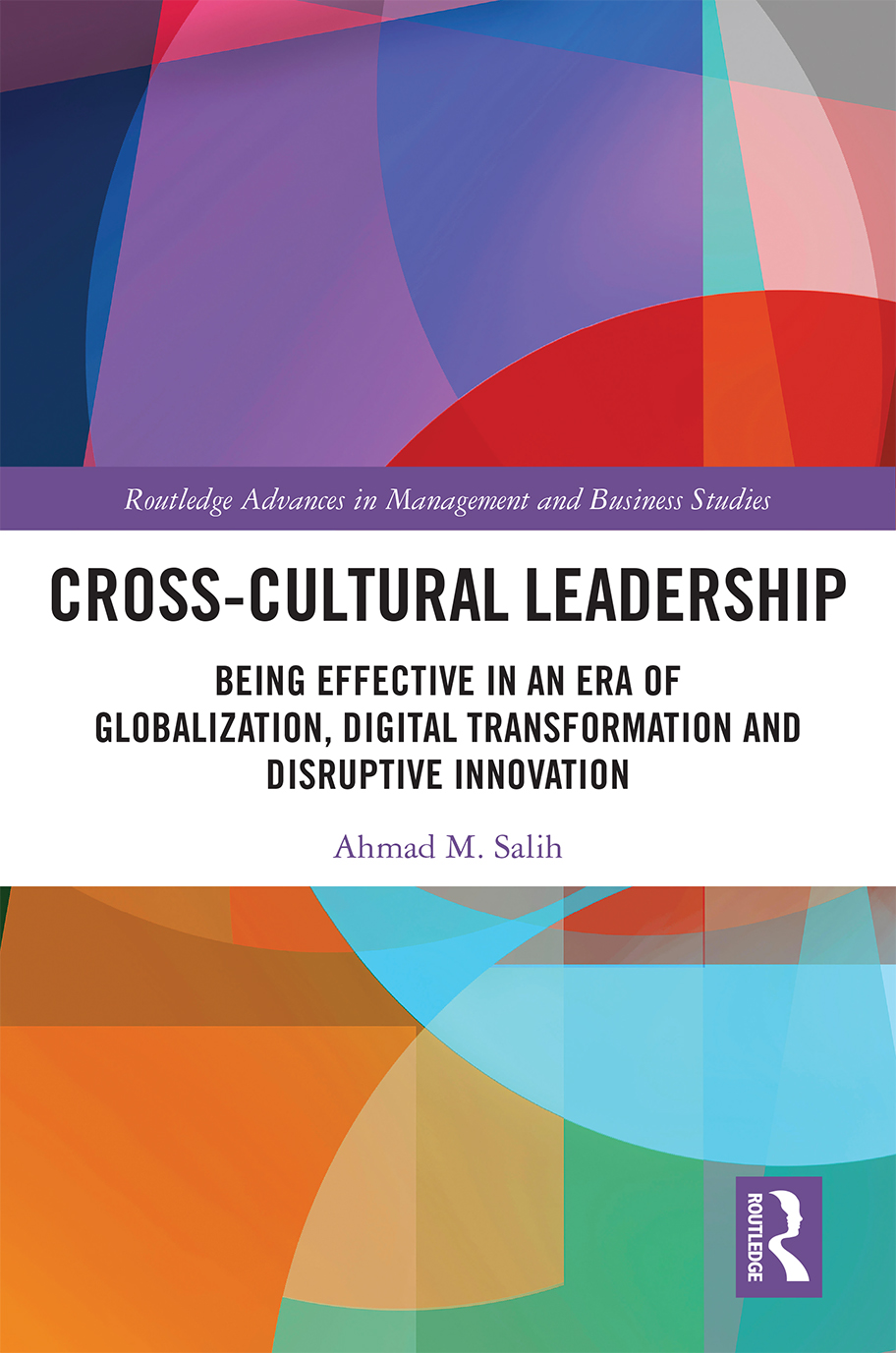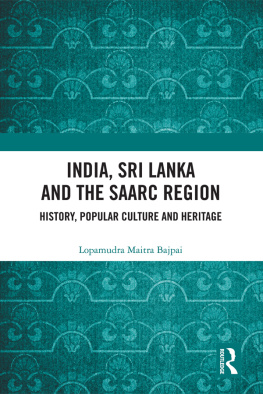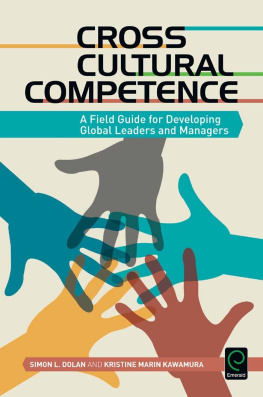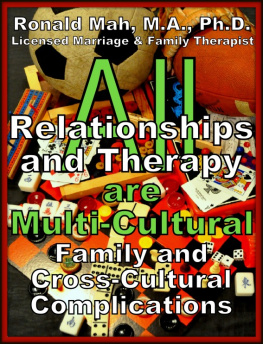Contents
Landmarks

Cross-Cultural Leadership
For many decades, management in its research and practice has been in need of an alternative approach and paradigm to understanding human behaviours. Many studies and books have attempted to provide solutions to the individual, which ended up being a cultural dilemma with little success. This book provides a novel approach to address this dilemma by linking aspects from three knowledge domains: Psychology, Anthropology and Sociology. Adaptive, Sustainable and Culturally Intelligent Leadership supports Cultural Intelligence (CQ) and makes it a practical construct and tool that both managers and researchers harness to understand what cultural Chameleon means. The book also renders support to Douglaisan Cultural Framework (DCF) by activating the role of the usually neglected fifth culture; the hermit by linking it to the metacognitive dimension of CQ. This link introduces for the first time the mechanism that individuals use to run through metacognitive processes to drive change. This book is a tool for individuals to help them work efficiently outside their homeland. Being an adaptive or culturally hybrid leader is among the most important competencies of the effective leaders in the 21st century. By focusing on comprehending the five cultures as elaborated in DCF, leaders and managers will be relieved from the dilemma of having to understand each and every national culture of their employees. This book will be of value to researchers, academics, managers, and students with an interest in leadership, management, organization studies, globalization, and innovation.
Ahmad M. Salih is a Strategy/Operational Excellence Senior Director at Khatib & Alami LLC, United Arab Emirates.
Routledge Advances in Management and Business Studies
Diversity and Entrepreneurship
Edited by Vanessa Ratten and Leo-Paul Dana
Improving Competitiveness through Human Resources Development in China
The Role of Vocational Education
Min Min and Ying Zhu
Collaborative Research in the United States
Policies and Institutions for Cooperation among Firms
Albert N. Link
Green Human Resource Management in Chinese Enterprises
Jie Shen, Jenny Dumont and Xin Deng
Developing the Workforce in an Emerging Economy
The Case of Indonesia
Edited by Kantha Dayaram, Linda Lambey, John Burgess and Tri Wulida Afrianty
Cross-Cultural Leadership
Being Effective in an Era of Globalization, Digital Transformation and Disruptive Innovation
Ahmad M. Salih
For more information about this series, please visit www.routledge.com/Routledge-Advances-in-Management-and-Business-Studies/book-series/SE0305
First published 2020
by Routledge
52 Vanderbilt Avenue, New York, NY 10017
and by Routledge
2 Park Square, Milton Park, Abingdon, Oxon OX14 4RN
Routledge is an imprint of the Taylor & Francis Group, an informa business
2020 Ahmad M. Salih
The right of Ahmad M. Salih to be identified as author of this work has been asserted by him in accordance with sections 77 and 78 of the Copyright, Designs and Patents Act 1988.
All rights reserved. No part of this book may be reprinted or reproduced or utilised in any form or by any electronic, mechanical, or other means, now known or hereafter invented, including photocopying and recording, or in any information storage or retrieval system, without permission in writing from the publishers.
Trademark notice: Product or corporate names may be trademarks or registered trademarks, and are used only for identification and explanation without intent to infringe.
British Library Cataloguing-in-Publication Data
A catalogue record for this book is available from the British Library
Library of Congress Cataloging-in-Publication Data
A catalog record has been requested for this book
ISBN: 978-0-367-36147-1 (hbk)
ISBN: 978-0-429-34469-5 (ebk)
Typeset in Sabon
by codeMantra
To the man who, one day, shall take humanity from darkness into light, and from ignorance into knowledge, I dedicate this work to him and feel pledged to have my humble work carrying his name. Rasha (my dear wife), Zaid, Hussain, and Mohammed, my lovely sons, thank you for being of great support and without you this book would not have seen the light. A special thanks goes to my little sister-in-law, Subhan, for being keen to review my work and for providing valuable comments on it. Last but not least, my parents and my parents in law, thank you for praying for my success.
Finally to my father, Faeq, who left this world last year and was not able to see the book, and to my mother, Nazhat, whose company I enjoy having and blessed to hear her voice every day.
Part 1
Introduction
In the opening chapter, we focus on the significance of the concepts and framework presented and how important those are for both academics and practitioners around the world. The preface and forward plotted by Dr. Taran Patel from Grenoble Ecole de Management and Dr. Mohamed Salama from Heriot Watt University locate the book in a suitable horizon to students with a global reach. As an opening chapter, it lays down how this book is structured to provide readers with relevant guidance and manage their expectations. Moreover, we attempt to answer the following question as well:
What problems the book touches and how genuine are those problems?
What knowledge gaps this book addresses that management scholars call to fill?
What are the main challenges faced?
Structure of the book.
Why becoming global is imperative in the era of Digital Transformation and Disruptive Innovation.
This long-awaited book brings together two crucial areas of research and academic interest: leadership effectiveness and cultural intelligence. In the present era of increasing populism, intolerance, and unethicality both in the business world and in the larger society this book promises to sensibilise future business managers regarding how they may become effective leaders by behaving in more culturally intelligent ways.
Although the topic of leadership has been receiving increasing attention in past decades, for both its positive and negative impacts on a wide variety of internal (organisational) and external stakeholders, the topic of leadership effectiveness, and behaviours that lead to the perception of leadership effectiveness (and correspondingly ineffectiveness) among followers and co-workers, remains somewhat under-explored. In the same way, while the topic of cultural intelligence has been receiving increased attention in past decades, it has rarely ever been connected to leadership effectiveness, a surprising gap considering the increasing cultural diversity that leaders are faced within the contemporary workplace. Even when cultural intelligence has been evoked, it has been embedded within the notion of national culture, a construct that has itself been considerably criticised these past decades. In this literature, the focus has been limited to how people of one national origin (or culture) might adapt to people and practices of another nation. To the best of my knowledge, there has never been an effort to conceptualise cultural intelligence free from the concept of national culture. Addressing this knowledge gap is, in part, what makes this book unique from its predecessors.








